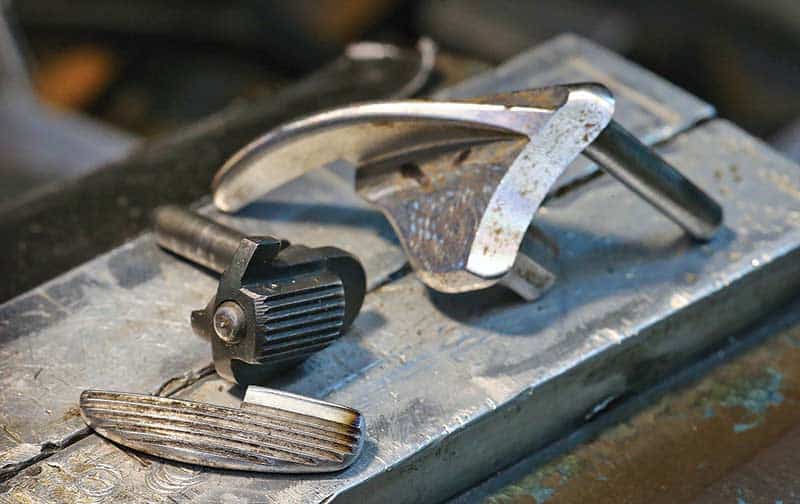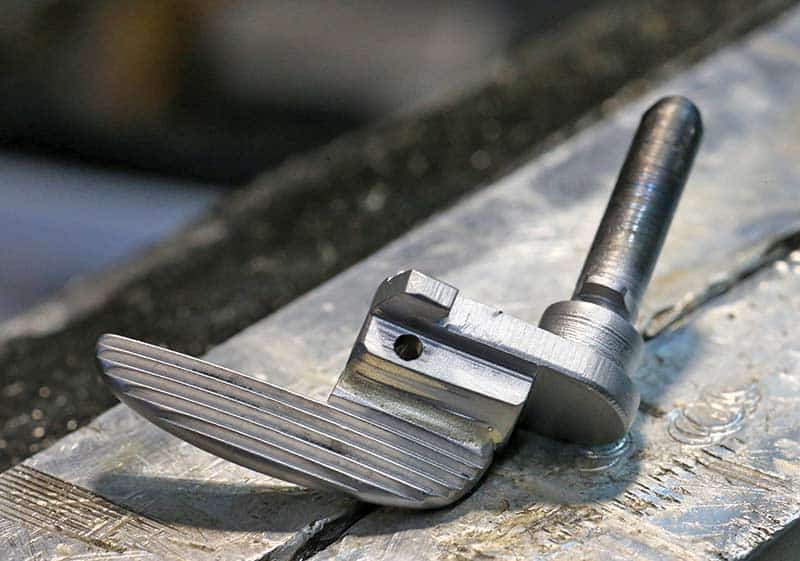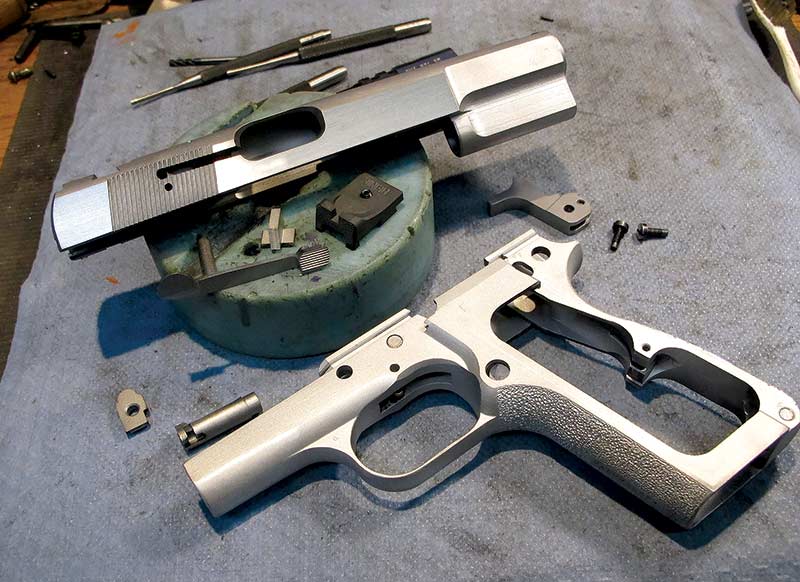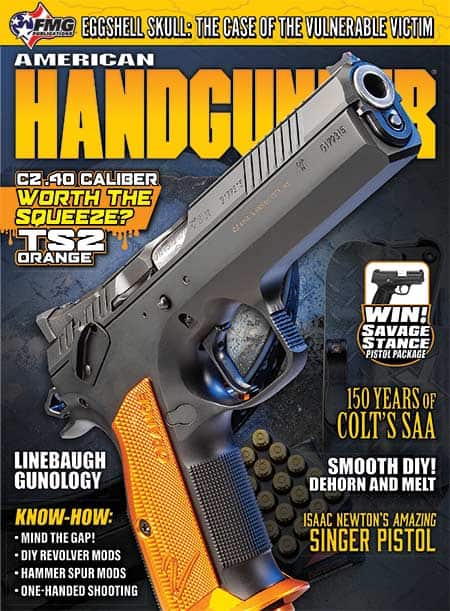Hi-Power Mods
The Hi-Power makes a comeback. John M. Browning never got to see it completed — dying before the design work was completed in 1927 and production began in 1935. The M-35 or more commonly called Hi-Power is a fantastic pistol with a simple design. It has some features making it popular with shooters, like the double stack 13-round magazine for higher capacity than the 1911 and an external extractor that self-adjusts. It has been produced in the millions and has been a service sidearm for many countries. Even the FBI hostage rescue team used them at one time. New “clones” by Springfield Armory and Fabrique Nationale Herstal have reinvigorated interest by shooters looking to add their own features.
I recently had a client bring me an older, rare, lightweight version, probably an Israeli military surplus gun. The pistol was a bit rough but had good bones. The barrel and lock-up stud showed little signs of use. The exterior, on the other hand, looked like it was carried for years. The sights were dinged up and it had a large lanyard loop ring. The client wanted it refreshed with some upgrades.
Function First
First, I replaced the sights with something more visible, a Richard Heinie “Slant Pro” rear sight with a 0.140″ square notch. For the front, I went with a custom “gold line” sight made using a Heinie blank, the 0.060″ thick base model to avoid cutting into the Hi-Power’s screwed in barrel bushing at the nose of the slide.
Next was the trigger, one of the shortcomings of the original model. This model came equipped with a magazine disconnector, which used a spring and plunger to rub against the inserted magazine and allows the trigger to engage the sear lever. This was removed to decrease friction and lighten the trigger pull. Then, the cast sear and hammer were replaced with bar stock parts from Extreme Engineering in California for a crisp trigger break. I never liked the shape of the trigger blade, which had a rather large, curved shape. The late Jim Garthwaite had made Hi-Power triggers that were wider and less curved. Those are no longer available, so I modified the factory part with the help of a torch, forging it straighter and then making it shorter to fit in the trigger guard. All springs were replaced with match-grade Wolff pieces.
Ergonomics Next
The Hi-Power has a reputation for biting the web of the shooter’s hand with the hammer. I’ve seen a few added “beavertails” on Hi-Powers but never felt they looked right or would carry well in a holster. On this model, it would not work being made of aluminum. A new shorter hammer is easier on the hands and solves the biting issue, at least in my hand.
The original thumb safety design was rather small and stubby. I had an idea in the back of my head to make one larger with a graceful swoop like the Stan Chen 1911 thumb safety.
Stan sent me a few blemished parts to play with, I cut the paddle off the 1911 piece and silver soldered it onto the Hi-Power factory part.
Next, the lower frame. The front strap of the Hi-Power is really paper thin on the front corners, which makes it almost impossible to checker unless you are Ted Yost with a 50 lpi file. I opted for stippling the front and rear grip areas of the frame (Nick, aka Mr. Stipple, did this work). The stippling will provide plenty of grip, the stippling is all done with a hammer and chisel, taking care not to deform the thin areas of the frame.
There are few options for finishing aluminum. Anodizing, which can be spotty on an old alloy or spray-on product, that would not wear well on the soft aluminum. I chose a PVD (physical vapor displacement) process. I use IonBond through Evolution Armory in New Hampshire.
Dave Panciotti at Evo, a gunsmith himself, walks the parts through the process and has a keen eye for anything I might have missed. The black IonBond is very durable and scratch resistant, even on aluminum. The lower was bead blasted with 120-grit aluminum oxide beads. The slide was also matted on the rounds, and the flat areas sanded with 400-grit paper. The IonBond looks really nice, particularly with some polished areas next to the matte rounds. A set of black VZ grips completed the project, making it a stealthy carry piece.
For more info: VZGrips.com, Heinie.com, IonBond.com, EvolutionArmory.com








